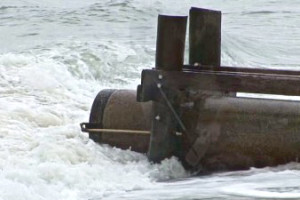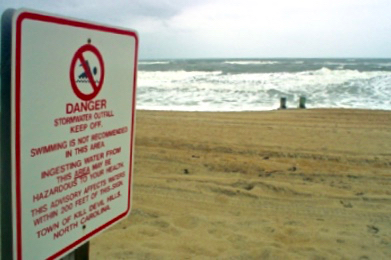When you live in a coastal environment, you must be aware that everything that goes on the ground is going to end up in the water eventually. Stormwater runoff treatment has plagued the Outer Banks for some time, and a new state study shows how complex the problem is. Writing for Coastal Review Online, and shared by the Outer Banks Voice, Catherine Kozak’s article is an outstanding overview of the issues involved and why they are so difficult to solve.

“Septic tanks and bird droppings contribute to the stew of pollutants that pour into the ocean during and after storms on the Outer Banks, but measures to remediate the toxic flow could prove to be costly and politically difficult.
A draft report on a stormwater pilot project almost a decade in the making details episodic elevated levels of bacteria from fecal contamination at Nags Head and Kill Devil Hills beaches in the vicinity of nine ocean outfalls — large pipes maintained by the state Department of Transportation.
Stormwater, including runoff from N.C. 12, eventually makes its way to the outfalls. The study said that bacteria levels “consistently exceed water quality standards” after heavy rainfall and can be found as far away as 100 meters up and down the beach from the outfalls.”
[box type=”bio”] Treatment of stormwater runoff has been an Outer Banks issue for years. Read how complex the problem is on Coastal Review Online.[/box]
